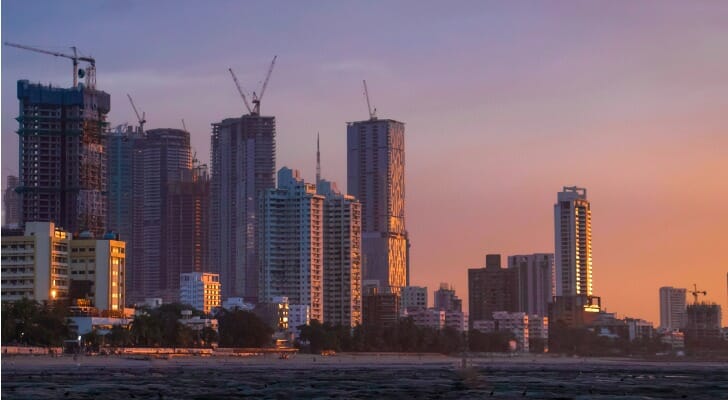The oldest exchange in Asia is the Bombay Stock Exchange, based in Mumbai and now known as the BSE. Its roots go back to the 1850s. With a market capitalization of approximately $2.2 trillion, it is the second-largest stock exchange in India by market capitalization, after the government-owned Indian Stock Exchange, or NSE. The BSE has more listed companies than the NSE, however, with more than 5,600 listed firms. If you’re interested in investing on foreign exchanges consider working with a financial advisor who’s familiar with non-U.S. bourses.
In the middle of the 19th century a handful of securities brokers began gathering under a banyan tree to informally trade securities. In 1875, the exchange was formalized as the Native Share and Stock Brokers’ Association. In 1956 the Bombay Stock Exchange was recognized under Indian securities laws as the country’s first exchange.
How BSE Works
The BSE operates from 9 a.m. to 4 p.m. That includes regular trading from 9:15 a.m. to 3:30 p.m. and extended hours from 3:40 to 4 p.m. Trading hours are set by local India Standard Time, which is nine and a half hours ahead of New York time.
Trading on the BSE is conducted in Indian rupees (INR). Each rupee is equivalent to slightly more than a penny at $0.013.
The BSE also uses the Indian numbering system. In this system, 100,000 is referred to as 1 lakh. One crore is equal to 10 million. One trillion is 1 lakh crore.
BSE Listing Requirements
To be listed on the BSE companies have to conform to minimum financial requirements. These include:
- $1.3 million in capital
- $3.4 million in market capitalization
Companies seeking to go public on the BSE also have to agree to financial disclosures to the BSE and deposit 1% of the of the issue amount with the exchange before the offering.
Largest BSE Stocks

Compared to other major global economies, especially Western nations, large corporations are less important in the Indian economy than the informal and household economies. However, the largest companies on the BSE by market capitalization include some of the world’s biggest firms in their respective industries. And they represent a diversified set of sectors, from energy to IT and banking. Here are the largest companies on the BSE, ranked by market capitalization.
- Reliance Industries (5003254), oil and gas
- Tata Consultancy Services (532540), information technology consulting and software
- HDFC Bank Ltd (500180), banking and financial services
- INFOSYS Ltd. (500209), information technology consulting and software
- Hindustan Unilever Ltd. (500696), consumer products
Special BSE Considerations
The BSE SME is the BSE’s market for equities of small and emerging companies and includes approximately 250 companies. BSE StAR is the exchange’s mutual fund platform. BSE Bond is for trading debt securities.
How to Invest in the BSE
In order to invest in the BSE, investors have to have a trading account with a broker registered with the Securities and Exchange Board of India (SEBI). Investors also have to provide proof of identity and address and set up a demat account with the SEBI-registered broker. Demat, short for dematerialized, is a type of account necessary to traded shares electronically in India.
Rather than trade directly on the BSE in Indian shares, many investors choose instead to invest in funds based on the SENSEX index. SENSEX is a market index based on 30 established companies trading on the BSE. It is also sometimes called the BSE 30.
There are a number of exchange-traded funds (ETFs) tracking SENSEX that are available to investors on U.S. exchanges. Some ETFs also track different sectors of BSE companies, including small and medium-sized enterprises.
Bottom Line

The Mumbai-based BSE is Asia’s oldest exchange and, with the NSE, also located in Mumbai, India. It has more companies but a somewhat smaller capitalization than the government-owned NSE. Investors often participate in the BSE by buying and selling shares of exchange-traded funds based on the SENSEX index of leading BSE firms. The BSE is the oldest Indian exchange but not the largest. The Indian Stock Exchange or NSE has a somewhat larger market capitalization. The NSE is also more liquid, which may make it a better choice for individual investors. It has its own index, the Nifty 50, which is also tracked by U.S.-traded funds.
Tips for Investing
- Before investing in the BSE or any other international stock exchange, consider working with a financial advisor who has experience with international financial markets. SmartAsset’s free tool matches you with up to three vetted financial advisors who serve your area, and you can interview your advisor matches at no cost to decide which one is right for you. If you’re ready to find an advisor who can help you achieve your financial goals, get started now.
- If your investments pay off, you may owe the capital gains tax. Figure out how much you’ll pay when you sell your stocks with our capital gains tax calculator.
Photo credit: ©iStock.com/Jayesh Pawar, ©iStock.com/Igor Kutyaev, ©iStock.com/GCShutter
